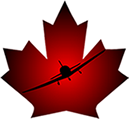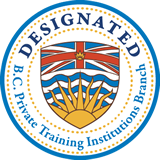 |
|
The Descent
“Here is Edward Bear, coming downstairs now, bump, bump, bump on the back
of his head, behind Christopher Robin. It is, as far as he knows,
the only way of coming downstairs, but sometimes he feels that there
really is another way, If only he could stop bumping for a moment
and think of it.”
-A. A. Milne-
Each and every flight in an aeroplane ends with a
descent and re-acquaintance with the surface of our planet in one
way or another. Since descending is an inevitable part of flight it
is in our interest as pilots to execute the manoeuvre in as skilful
and purposeful manner as we can manage.
As Albert Einstein said, “Things should be made as
simple as possible, but not any simpler.” While descending, a skill
learned very early in the flight training process, seems simple and
straightforward, there are a number of techniques that can be
incorporated into our skill-set and a base of knowledge that can
lead to improvement in our over-all skills as a pilot. Executing a
descent at the appropriate moment and in a skilful manner will
improve both our enjoyment of flight and increase our safety.
We make use of the descent during several phases of
flight. While enroute on a cross country flight, we must at some
point, execute a descent either to set up our approach for landing,
to decrease altitude for weather or to achieve a specified cruising
altitude. We use the descent on approach and, either for practice or
in the event of an engine failure we descend with no engine power to
assist us.
There are several, generic factors affecting the way an
aircraft descends and it is useful to understand them so we can
maintain precise control of the process. As with climb, the weight
of the aircraft, the location of its centre of gravity, density
altitude and humidity, use of carburetor heat, deployment of flaps
and landing gear, turbulence and the pilot’s accuracy and skill in
maintaining correct angle of attack and airspeed all affect an
aircraft’s descent.
An aircraft climbs proportionally to excess thrust; it
descends proportionally to deficit thrust, the difference between
thrust required to maintain level flight and available thrust. It
both climbs and descends in inverse proportion to weight.
Last month we discussed climb performance and used the
formula Rate of Climb is equal to Excess Thrust Horsepower (ETHP)
divided by weight, R/C = ETHP x 33,000/Weight, to determine our rate
of climb at any given airspeed (1). A descent can be thought of as a
negative rate of climb so, using essentially the same formula, an
aircraft’s rate of descent(R/D),
how quickly it loses altitude expressed in feet per minute (fpm),
can be derived from the formula: R/D = Deficit Thrust Horse Power
(DTHP) x 33,000/Weight (2).
Weight is an interesting factor in relation to descent.
At any given angle of climb—nose up attitude—a portion of the weight
vector, which acts directly between the centre of gravity of the
aeroplane and the centre of gravity of the planet, acts as drag and
must be overcome by thrust. In a descent, a portion of the weight
vector acts as thrust and assists us in our progress downward in
direct proportion to our angle of descent. The steeper our angle of
descent, the more weight provides assistance in increasing the rate
of descent.
The lighter the machine is loaded, the less assistance
is derived from weight at any given angle of descent, resulting in a
lower rate of descent. Of course, at a 90○ angle of
descent—an exciting prospect—all of the weight of the aircraft would
be acting as though it were thrust. In a C-172 at gross weight, with
the engine turned off, we would have the equivalent of 2300 lbs
thrust acting straight down. We would discover the thrill of
considerable vertical acceleration.
Centre of gravity location affects descent in the sense
that an aircraft with a more forward centre of gravity is,
effectively, a heavier aircraft resulting from the increase in
down-force developed by the tail-plane which acts on the aircraft as
though it were weight. Centre of gravity is not something we
normally have much control over during flight unless, perhaps, we
have a load of skydivers, or, as my old buddy Duke Elegant used to
say, a load of lobsters we can toss out the door, so we won’t get
too excited about it right now. We will simply remember that an
aircraft with a more forward centre of gravity will descend at a
slightly higher rate with a given power setting than the same
aircraft with a more aft centre of gravity.
Density altitude and humidity affect rate of descent by
increasing or decreasing drag. A high density altitude and high
humidity environment—thinner air—results in reduced drag which, in
turn, decreases the deficit thrust produced at any given power
setting. Once we are airborne, of course, there is not much we can
do about the density altitude or humidity factors expect understand
how they affect performance.
Deployment of flap and landing gear increases drag.
Increasing drag increases the amount of deficit thrust at any given
power setting which increases our rate of descent. If getting down
at a higher rate of descent is a goal: get those flaps down and
deploy the gear. We can also, of course, also reduce power,
increasing the amount of deficit thrust. Putting the machine into a
slip also assists in increasing drag and thus increasing rate of
descent. Use of carburetor heat decreases power output from the
engine reducing available thrust and increasing our rate of descent.
Turbulence and pilot skill also affect rate of descent.
This is particularly apparent in a glide as angle of attack is very
important. If we want to achieve minimum sink rate or maximum
distance rate in a glide, maintaining the required airspeed and
angle of attack is critical. Increasing or decreasing airspeed,
angle of attack, will reduce our glide performance either in terms
of time or distance.
When flying in turbulence, typically we choose to
increase speed somewhat to ensure positive control of the machine
which, unfortunately, also changes performance. Increased airspeed
increases our rate of descent in a glide or increases the amount of
required power to maintain a given rate of descent. With the
aircraft bouncing all about the sky, it may be a bit more
challenging to maintain constant airspeed and angle of attack than
when operating in still air.
But what about my flight tomorrow?
For flying light aircraft there are a few easy Rules of
Thumb that can be a big help in setting up a desired descent
profile. We know that attitude plus power gives us performance. The
key factors we want to control in setting up the descent are those
two factors: power and attitude.
In level flight at cruise power, we remember that a
change of 100 RPM or 1” MP results in a change in airspeed of
approximately 5 knots. We know that the same change in RPM or MP, if
we maintain the same airspeed, will result in a climb or descent at
approximately 100’/min. So far so good.
If I am flying at 100 knots and would like to establish
a 300’/min rate of descent, I can reduce power by 300 RPM or 3” MP,
adjust my attitude as required to maintain the 100 knots, and the
job is done. Some “fine tuning” may be required in the power setting
but the Rule of Thumb works pretty well for most, small aircraft.
If I want to change airspeed and set up a rate of
descent, for example from that 100 knots in cruise I would like to
descend at 90 knots and 300’/min, I can reduce power 200 RPM or 2”
MP for the airspeed change and an additional 300 RPM or 3” MP for
the rate of descent: a total power reduction of 500 RPM or 5” MP.
Once again, some “fine tuning” may be required
Or, I can simply leave the power setting as is, poke
the nose down, increasing airspeed to, say, 115 knots, and descend
at 300’/min. I’ve already paid for my excess altitude. Why not get
some of that cost back through an increase in airspeed?
One of the questions students always seem to struggle
with is, “How do I know when to start my descent for approach?” For
light aircraft there are a couple of easy Rules of Thumb that can
see us through this dilemma.
For larger aircraft, typically people use some form of
the 3/6 Rule:
3 times the altitude (in thousands of feet) you have to lose is the
distance back to start the descent; 6 times your groundspeed is your
descent rate. If I need to lose 5000’ I would begin my descent 15
miles back (3 x 5 = 15); my descent rate at a ground speed of 100
knots would be 600’/min (100 x 6 = 600). This works well, but at
higher speeds starts to give somewhat exciting rates of descent.
With light aircraft,
500’/min is a
comfortable and fairly efficient rate of descent. Much faster and
our ears start to pop and our passengers begin to get edgy. Much
slower and it seems like forever to reduce altitude.
A 500’/min rate of descent means two minutes to descend
1000’. If I am approaching my destination aerodrome at, say, 6500’
and the circuit height is 1500’, I will need to lose 5000’. I take
the number of thousands, in this case 5, and multiply that number by
2 (5 x 2 = 10). This gives me the number of minutes back from the
circuit I will need to begin my descent (10 minutes).
To convert time to approximate distance we can simply
multiply the time by our airspeed divided by 60. For example, if I
am flying at 90 knots and have determined I need to initiate my
descent 10 minutes prior to arrival at a selected point, I can
multiply 10 by 90/60, or, more simply I can drop the extra zeros and
multiply 10 by 9 and divide the result by 6, giving 15 miles. This
is not exactly precise; my airspeed is not necessarily the same as
my ground speed due to both wind factors and slant angle, but unless
there is significant wind, the answer will do pretty nicely as a
working solution.
So, here we are flying at 6500’ enroute Pitt Meadows –
Campbell River. I check my CFS and determine airport elevation is
346’. Circuit altitude is 1300’ and I would like to be at circuit
altitude at least 2 nm from the aerodrome. I need to lose 5200’
(6500 - 1300 = 5200). I determine I will need to initiate my descent
procedure 11 minutes prior to arrival (5.2 times 2 = 10.4). I round
up just to keep things simple. If I am descending at 100 knots I
will need to initiate descent approximately 20 nm from the aerodrome
(11 x 100/60 = 18.3 + 2 = 20) (3).
As I cross the line between CapeLazlo and Harwood
Island, I can reduce power approximately 500 RPM or 5” MP, set up my
descent profile at 500’/min, get everything all trimmed in and allow
the machine to descend to my intended altitude of 1300’ in good time
to enter the pattern at Campbell River. No muss, no fuss.
If your brain doesn’t appreciate math during
flight—pretty normal for most people—make a plan prior to flight. No
need to make this difficult. Planning ahead is always a good idea.
It saves all sorts of confusion later. If you already know what you
will need to do, all you have to do in the aircraft is execute the
plan.
Keep things simple. Plan and think ahead. Enjoy.
Notes:
1.
Kershner, William K., The Advanced Pilot’s Flight Manual,
Iowa State University Press, 1994, page 90. One horsepower equals
550 ft lb/sec or 33,000 foot
pounds/min.
2.
ibid, pg. 34. If you find these things interesting, a Rate
of Descent of 500’/min at constant airspeed will require a reduction
in power of approximately 35 hp (500 = 33000 x DTHP/33000; DTHP =
34.85 hp).
3.
Using the 3/6 Rule: 5.2 x 3 = 15.6, call it 16nm, + 2 = 17 nm back
from destination. 6 x
100 knots = 600’/min for rate of descent. |


